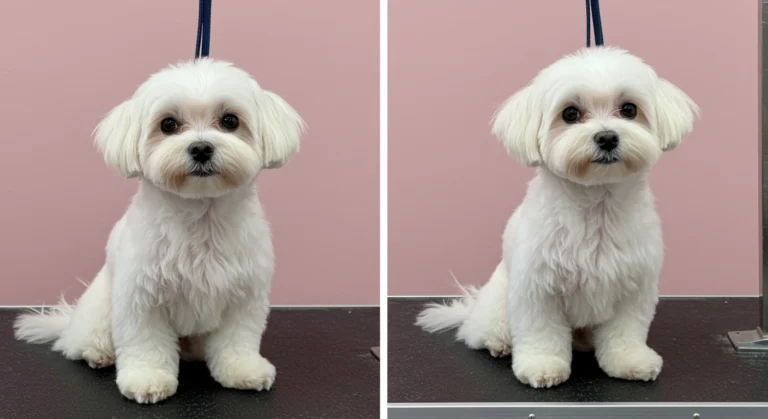Why I Shaved My Black Lab and Why You Should Think Twice
It was a blazing hot July day. My black Lab, Diesel, lay stretched out on the kitchen floor, panting hard. His thick coat was everywhere sticking to my socks, floating around the house.
I thought shaving a black Lab would help him cool down and cut down on shedding. So, I grabbed my clippers.
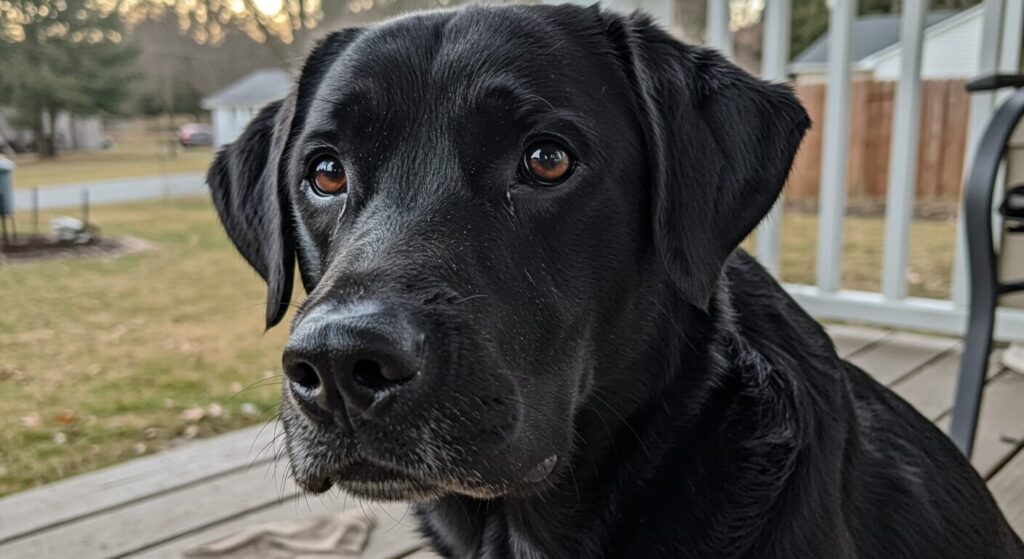
Half an hour later, I realized I’d made a huge mistake. Diesel’s coat looked patchy, uneven just plain bad. My wife burst out laughing.
“He looks like a walking carpet sample!”
she joked. Diesel looked up at me, confused, as if asking, “What did you do to me?”
That one bad decision led me down a rabbit hole of research. Can you shave a Lab? Is it ever a good idea?
Turns out, shaving a Labrador retriever can cause more harm than good. Here’s what I learned.
Why Shaving a Black Lab Isn’t a Good Idea
I didn’t realize that Labs have a special coat designed to protect them. Diesel’s fur wasn’t just hair it was a built-in cooling and heating system.
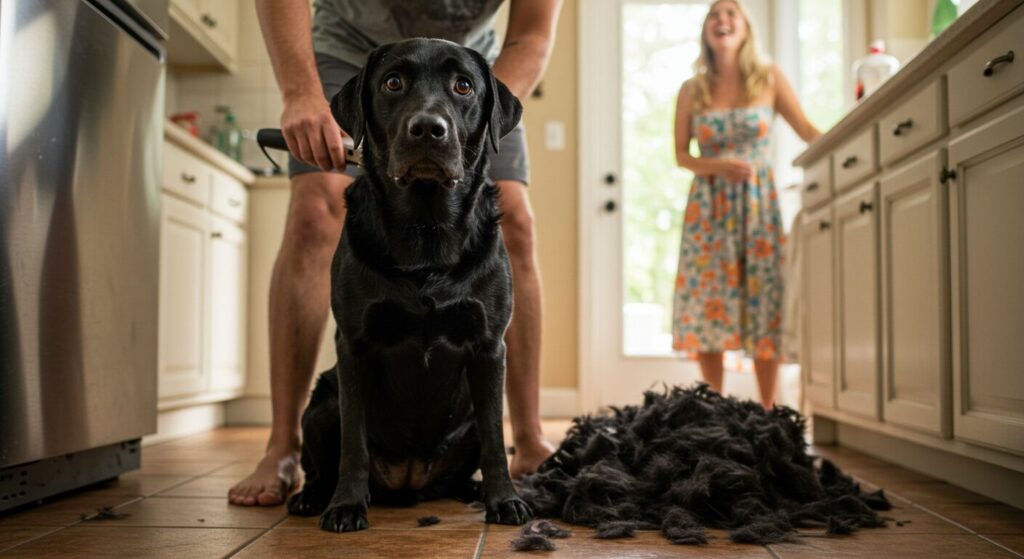
Dr. Emily Carter, a vet with 20 years of experience, explained it to me.
“Labs have a double coat. The outer layer repels water and dirt, while the undercoat regulates temperature. If you shave it, they lose that natural protection.”
Many people think that shaving a black Lab will keep them cooler. But science says otherwise. A shaved Labrador retriever actually gets hotter because the undercoat helps trap cool air.
Without it, their skin absorbs more heat from the sun. In fact, studies show shaved dogs can be 10 degrees hotter than those with their natural coat.
I also thought shaving would reduce shedding. Wrong again. “Shaved fur grows back unevenly,” Dr. Carter said. “It can actually make shedding worse.”
Diesel’s fur grew back in weird patches, making him look scruffy for months.
When Shaving Your Labrador Might Be Necessary
So, is shaving your Labrador always a mistake? Not necessarily. Some situations call for it. Mike Hensley, a professional groomer, told me, “I don’t recommend shaving Labs unless there’s a medical reason.”

Here’s when it might be okay:
- Skin conditions – If your Lab has hot spots, mange, or other skin issues, a vet might suggest shaving small areas to help with healing.
- Surgery or injuries – Vets often shave the area around a wound to keep it clean.
- Severe matting – While Labs don’t usually mat, neglect can lead to tangled fur. If brushing isn’t enough, shaving may be necessary.
- Tick or flea infestations – If parasites are out of control, shaving can help get rid of them faster.
For everyday grooming, though, shaving is not the answer.
How to Shave a Black Lab Safely (If You Must)
If you have a real reason to shave your Lab, do it carefully. Mike gave me some tips after my DIY disaster.
- Use the right clippers. A #10 blade is best. Anything shorter can hurt their skin.
- Wash and dry first. Dirty fur dulls the blade and clogs clippers.
- Shave in the direction of hair growth. Going against it can cause irritation.
- Leave at least an inch of fur. This helps protect their skin from sunburn.
- Check for irritation. Shaved skin is sensitive, so use pet-friendly sunscreen if your Lab spends a lot of time outside.
The Problems with Shaving a Labrador Retriever
I learned the hard way that shaving your Labrador can cause more problems than it solves. Diesel’s black coat had protected him from the sun, but after shaving, his skin became pink and sore. “Dogs can get sunburned, just like us,” Dr. Carter warned. “In severe cases, it can even lead to skin cancer.”
Another issue? Temperature regulation. Diesel, who had always been fine in cool weather, started shivering at night. His fur was supposed to keep him warm, but without it, he lost that natural insulation.
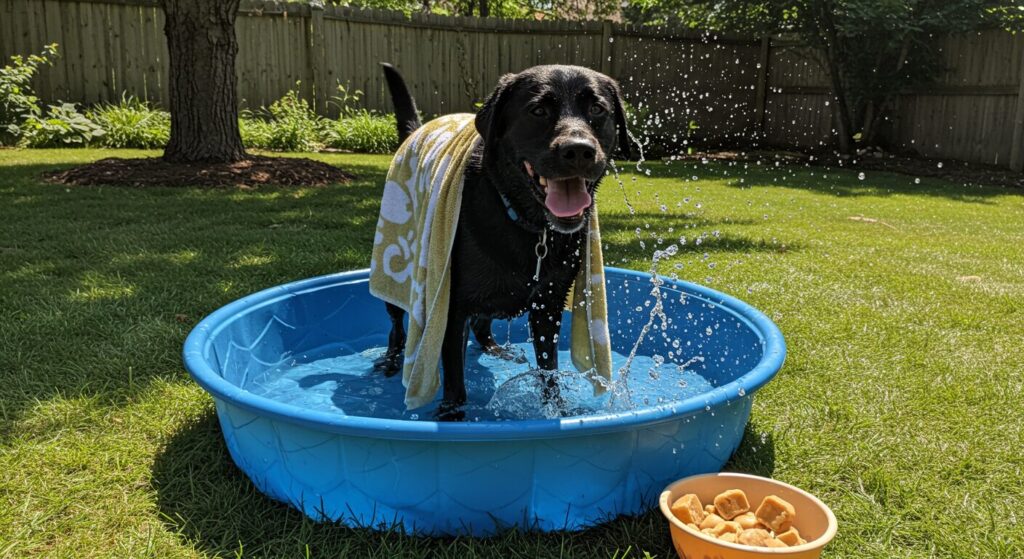
The worst part was his behavior. He seemed less confident and more anxious.
“A dog’s coat is part of their identity,” Mike said.
“Some dogs feel exposed and vulnerable after being shaved.” I even found people online saying their Labs acted differently after a bad shave.
Better Ways to Care for a Labrador Retriever’s Coat
Since shaving didn’t help with shedding or heat, I looked for better solutions. Here’s what actually worked:
- A deshedding brush (like the Furminator) pulled out loose hair before it could take over my house.
- A gentle shampoo helped remove excess fur without drying out Diesel’s skin.
- Instead of shaving, I gave Diesel a kiddie pool and lots of water to keep him cool.
- Adding fish oil to his food improved his coat, reducing shedding naturally.
What Groomers Say About Shaved Labradors
Groomers deal with the aftermath of bad shaves all the time. “People bring in Labs with sunburns, patchy coats, and skin issues,” Mike told me. “We try to warn them, but some learn the hard way.”
Sarah, another groomer, added,
“If you’re thinking about shaving your Lab, talk to a professional first. There are almost always better options.”
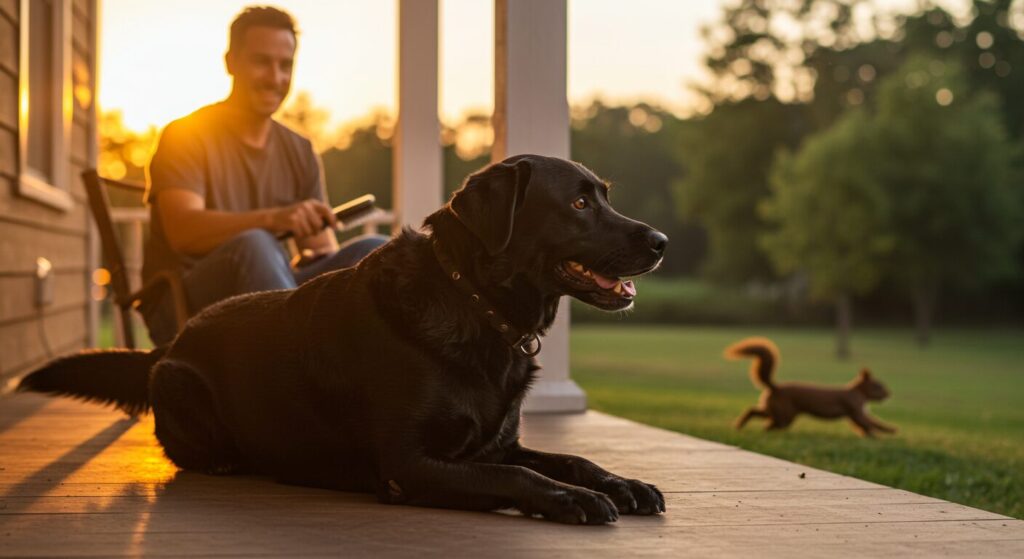
Final Thoughts: Should You Shave Your Labrador Retriever?
If you’re wondering, “Can you shave a Lab?” the answer is usually no. Diesel’s coat eventually grew back, but it took months. Now, I stick to brushing, cooling him with water, and keeping him in the shade on hot days.
Read More | Guide to PetSmart Adoption Week
If you’re considering shaving your Labrador, think twice. It’s not the easy fix it seems. Instead, try grooming techniques that work with their natural coat. Trust me your Lab will thank you.
Get dog tips & joy! Subscribe to Paw Prints!





